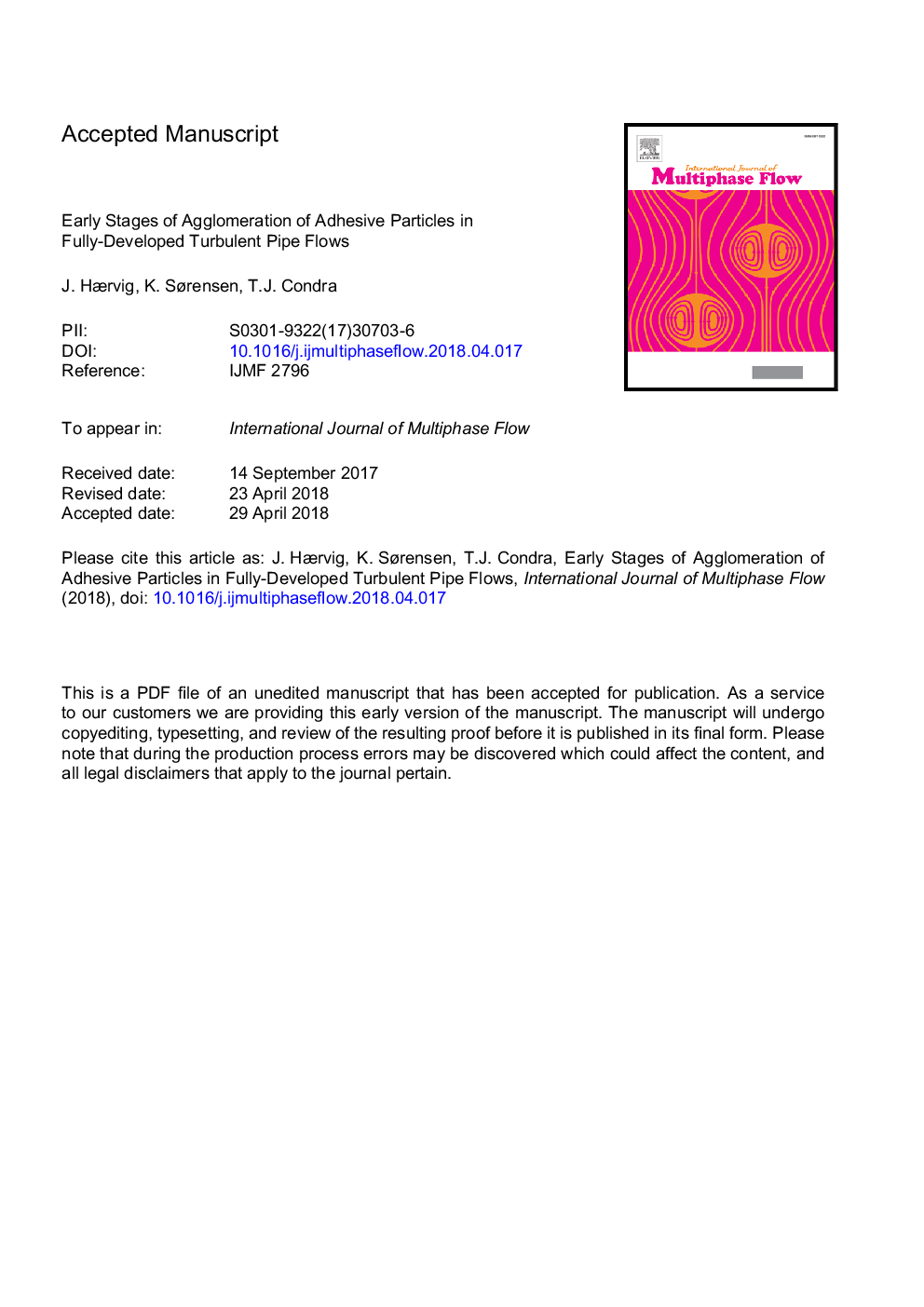| Article ID | Journal | Published Year | Pages | File Type |
|---|---|---|---|---|
| 7060058 | International Journal of Multiphase Flow | 2018 | 46 Pages |
Abstract
We study how changes in particle response time and adhesiveness affect particles agglomeration in fully-developed turbulent pipe flows. For this purpose, particle-particle and particle-wall interactions are fully-resolved using the soft-sphere Discrete Element Method (DEM) modified to include adhesiveness due to van der Waals forces and electrostatic forces through JKR theory. The particulate phase is two-way coupled to the turbulent fluid phase, which is partly resolved using Large Eddy Simulations (LES). First, we validate the simulations by grid refinement and by comparing the statistics of the flow field to experiments in literature. Secondly, we vary the particle response time Ïp=Ïpdp2/(18μ) and observe the largest agglomerates in terms of average number of particles per agglomerate to be formed by primary particles with intermediate Stokes numbers, e.g. Ste=Ïp/Ïeâ6.4 where Ïe=D/U is the eddy-turn over time or StL=Ïp/ÏLâ46.4 in terms of the integral time scale of the turbulent flow ÏL. Then we show how the total fraction of particles contained in agglomerates is almost constant up to Ste=6.4 after which there is a sudden drop in the fraction of particles contained in agglomerates. To investigate the transition from non-adhesive particles to highly adhesive particles, we vary the adhesiveness parameter Ad=γ/(ÏpU2dp) to obtain particles that vary from non-adhesive particles where no agglomerates are formed to highly adhesive particles where more than 70% are contained in agglomerates. While varying the adhesiveness of the primary particles for a fixed particle response time, we observe three distinct regimes. For almost non-adhesive particles, the agglomerate number density is highest towards the centre of the pipe with a maximum at 0.2â¯<â¯r/Râ¯<â¯0.3. Slightly more adhesive particles form an almost uniform agglomerate number density profile, while for highly adhesive particles there is a distinct peak in agglomerate number density at the wall where particles and agglomerates deposit.
Related Topics
Physical Sciences and Engineering
Chemical Engineering
Fluid Flow and Transfer Processes
Authors
J. Hærvig, K. Sørensen, T.J. Condra,
